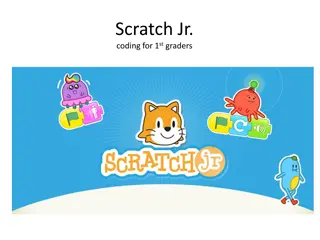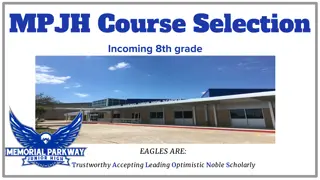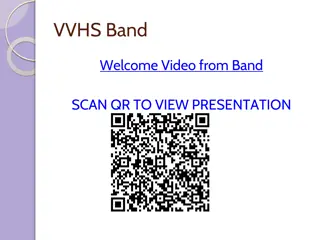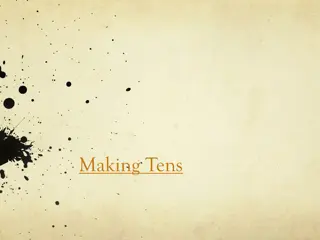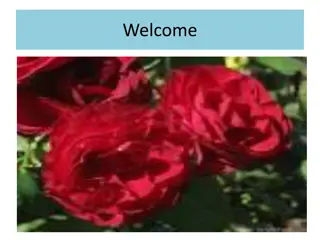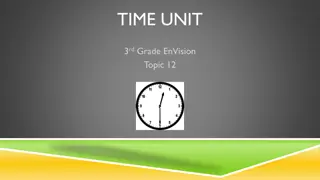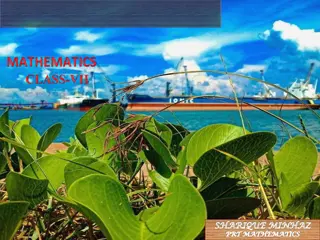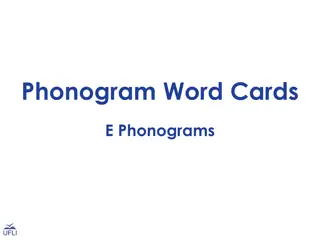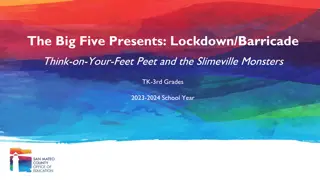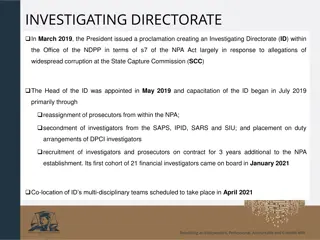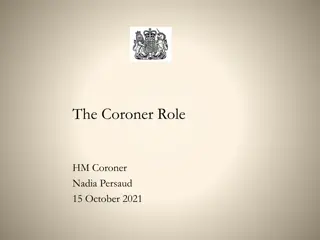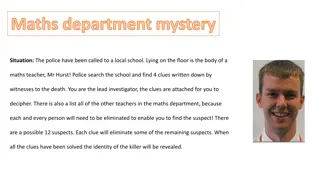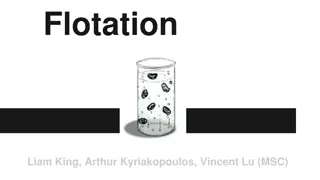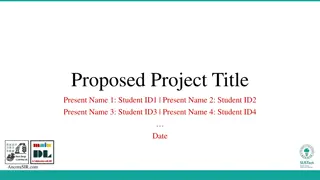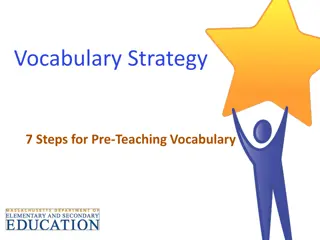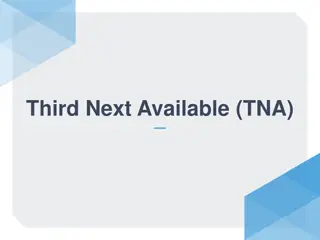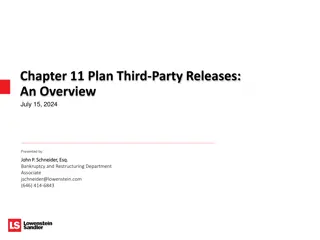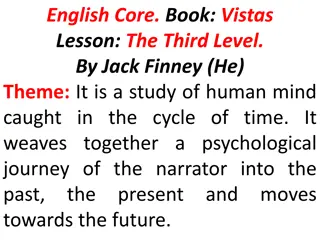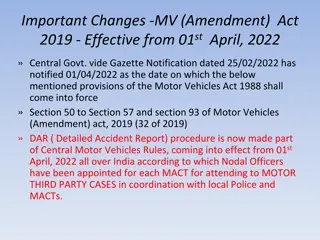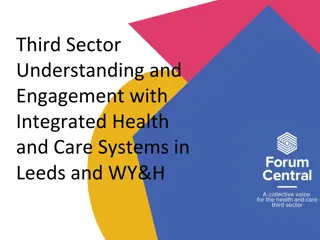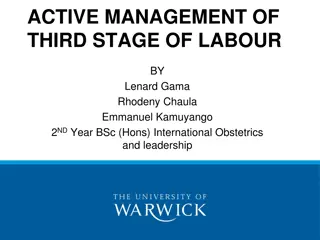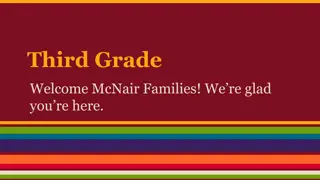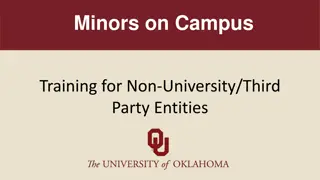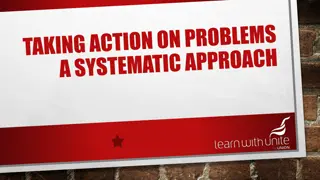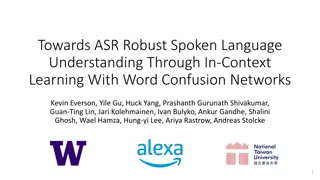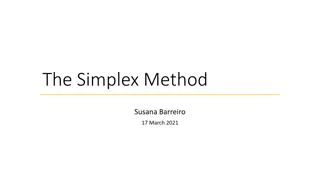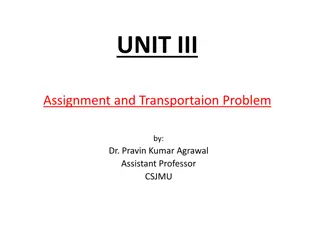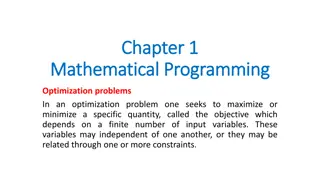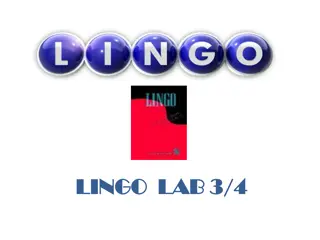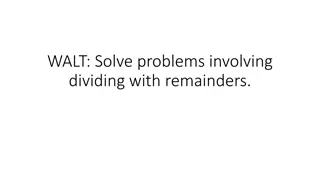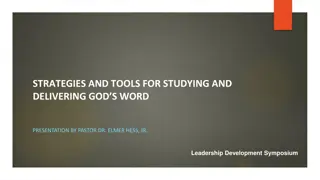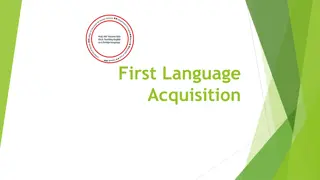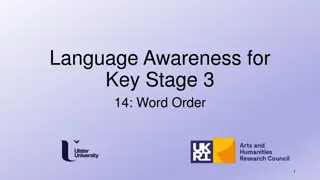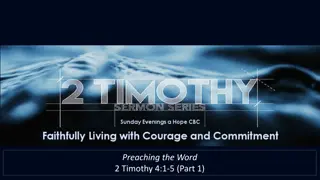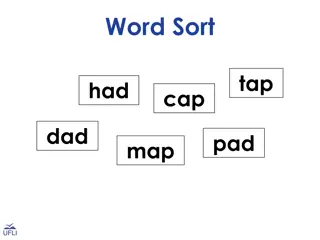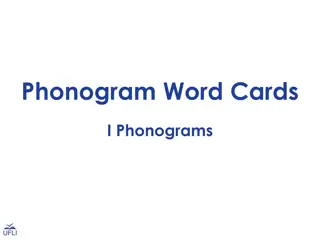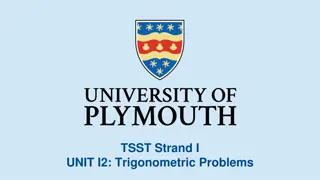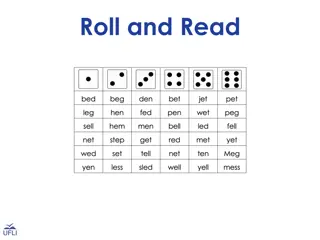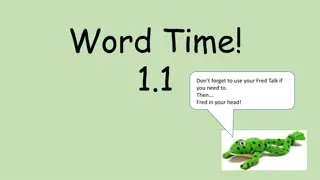Investigating Strategies to Engage Third Graders with Word Problems
Students often struggle with mathematical word problems, leading to panic and guessing in solving them. This study aims to understand and address these challenges by using visualization and tactile strategies to improve students' problem-solving skills. The research focuses on alleviating students' fears, enhancing their understanding, and developing successful problem-solving approaches.
Download Presentation

Please find below an Image/Link to download the presentation.
The content on the website is provided AS IS for your information and personal use only. It may not be sold, licensed, or shared on other websites without obtaining consent from the author. Download presentation by click this link. If you encounter any issues during the download, it is possible that the publisher has removed the file from their server.
E N D
Presentation Transcript
The Complexity of Engaging Third Graders with Word Problems AUTHORS: SAVANNA HOFFMAN & SYDNEY ALEXANDER MENTOR: DR. CLAUDIA BURGESS
Introduction Students are often afraid to solve mathematical word problems (Nosegbe-Okoka, 2004). All too often, panic sets in, self-esteem lowers, thinking shuts down, and an explosion of hands go up in the air pleading for help (Ponce & Garrison, 2005). As a result, students gloss over details of word problems, simply guess what to do, and perform random calculations without logical reasoning (Braddock-Hunt, 2015). How can teachers alleviate students fears of word problems and ensure that students are conceptualizing this mathematical process?
Purpose of Our Study The purpose of our study was to investigate how a group of students entering third grade understand and solve word problems through a sense-making approach with the help of visualization and tactile strategies. Using a behavior and error analysis process, we designed an instructional sequence to better understand where students struggle when solving word problems so that successful strategies and solutions can be acquired.
Learning Expectations Instructional goals for our sessions were drawn from the Confrey et al. (2012) learning progressions for Grade 2 Operations and Algebraic Thinking.
Literature Review Literature shows there are several strategies teachers can use to help students with word problems in the classroom. Having students justify their answers using solutions in words, drawings, or visual tools (Braddock-Hunt, 2015). Encouraging the inclination to check whether their answers make sense (Nosegbe- Okoka, 2004) gives students advantages in the process of learning and creating word problems. Pose word problems tailored to individual needs (Barlow, 2010) as each student can have the opportunity to get assistance in word problems where they struggle most.
Methodology Four students transitioning from Grade 2 to Grade 3: one male and three females. Student pseudonyms: Ryan, Jess, Katie and Lilly. Each participated in a 30-minute pre- and post-assessment interview. All students participated in every one of the seven 1-hour instructional sessions.
The cycle shown was carried out each week over the course of the study. We collaboratively coded qualitative classroom data from each lesson using Newman's Error Analysis Framework (White, 2009). After gathering data, we designed specific lessons to tend to specific student needs. Findings about students' thinking from qualitative data analysis informed the design of each subsequent lesson. Data-Based Instructional Cycle
Initial Interview Assessment Key Task #1 (Take from-Change Unknown) Student 1- Ryan struggled with a misconception of the equal sign and task-avoidant behavior. Student 2- Jess displayed task avoidant behavior such as choosing to skip the problem as a whole due to a breakdown in reading and comprehension. Student 3- Katie tried to solve the problem but did so incorrectly also due to comprehension issues. Student 4- Lilly solved the problem correctly. Key Task #2- (Take from-Start Unknown) Student 1- Ryan chose to skip the task after reading it. Student 2- Jess chose to skip the task after reading it. Student 3- Katie failed to distinguish between relevant and irrelevant information. Student 4- Lilly fell for keyword traps and tended to irrelevant information due to comprehension issues.
Lesson 1: Introductory Lesson The first lesson was an introduction to three-act tasks and carefully thinking about word problems. A three-act task is a set of three short videos that set up a scenario. Students watched a three-act task, then as a group, created a word problem based on what they learned and solved. Overall, this lesson gave insight on student personalities and appropriate objectives and goals for the summer. Based on our observations, we decided to focus on having students solve one or two step addition and subtraction problems with numbers less than 100 by using mental strategies for fluently adding and subtracting within 20.
Lesson 2: Solving Word Problems with Concrete Objects Lesson 2 served as a foundation for understanding student thinking and problem-solving skills. Students watched a three-act task then were given corresponding open-task problems and charts to help organize their thinking. Students tended to find all of the information needed to solve the three-act task but failed to know how to put that information to use.
Lesson 3: Using Resources to Solve Word Problems For lesson 3, students were shown a three-act task regarding cookies. The students needed to find how many cookies were taken from the package just by seeing pictures of the original package and how many were left. Students became confused when trying to keep track of all of the numbers involved in the problem. We decided to give students a more structured way to organize their thinking about each task to help them think more strategically.
Lesson 4: Introduction to Organizational Aid During lesson 4, we tested the new organizational aid we created. It was a Know, Don t Know and Learned chart designed to help students read mathematical word problems. Students used the information in the word problem to complete the chart then determined what they needed to find out based on what was left empty in the chart.
Lesson 5: Independently Using the Organizational Aid In lesson 5, we encouraged fully independent work. Students were able to find important features in word problems and fill out their charts accordingly. They also were able to complete open ended word problems. For example, students were given a word problem without numbers and were told to create their own problem by filling in numbers of their choice. Students were able to create a problem and solve it using their organizational chart.
Lesson 6: Using Money to Solve Word Problems During this lesson, students were asked to solve word problems without numbers, but instead words that represented numbers such as quarter and dime. The children were able to use coins to help them solve their problems correctly.
Lesson 7: Creating Word Problems Independently During the final lesson, students were able to create their own word problems based on any lesson they have done this summer. By engaging in an open task to create a word problem, students were able to produce mathematical problems on their own with little limitations. For example, one student wrote their own problem as Savanna had 975 stars. Sydney had 85 more stars. How many stars in all?
Final Interview Assessment Key Task #1 (Take from-Change Unknown) Student 1- Ryan yet again struggled with the misconception of the equal sign although he got the answer technically correct. Student 2- Jess got the problem wrong due to comprehension issues. Student 3- Katie showed task avoidant behavior throughout that seems to come from reading and comprehension issues. Student 4- Lilly got the problem wrong also but seemed to struggle with comprehension as well. Key Task #2- (Take from-Start Unknown) Student 1- Ryan also was able to use his mathematical skills to solve the problem correctly. Student 2- Jess completed the problem during this assessment. Student 3- Katie had task avoidant behavior during this question but ultimately was able to complete the problem with the correct answer. Student 4- Lilly re-read the problem multiple times and did not fall for the keyword traps yet again.
Reflection When engaging with word problems, there are two critical areas of focus: reading/language When engaging with word problems, there are two critical areas of focus: reading/language arts and mathematics. In other words, children must be able to read and comprehend the arts and mathematics. In other words, children must be able to read and comprehend the language in the problem while simultaneously comprehending the mathematics of the language in the problem while simultaneously comprehending the mathematics of the problem in order to transition it into a mathematical plan for solving. problem in order to transition it into a mathematical plan for solving. Because of the complexity of these types of problems, it is crucial to implement instruction that supports student engagement and motivation through strategies such as: using real world situations student interests hands-on inquiry-based instruction student-constructed problems external rewards
References Barlow, A. (2010). Building word problems: What does it take? Teaching Children Mathematics, 17(3), 140-14. Braddock-Hunt, J. (2015). Problems without numbers. Postscript, 21(5), 320-322. Confrey, J., Nguyen, K.H., Lee, K., Panorkou, N., Corley, A. K., & Maloney, A.P. (2012). TurnOnCCMath.net: Learning trajectories for the K-8 Common Core Math Standards. Retrieved from http://www.turnonccmath.net Ponce, G. A., & Garrison, L. (2005). Overcoming the walls surrounding word problems. Teaching Children Mathematics, 5(2), 256-262. Nosegbe-Okoka, C. (2004). A sense-making approach to word problems. Mathematics Teaching in the Middle School, 10(1), 41-45. White, A. L. (2009). A revaluation of Newman's error analysis. Proceedings of the Mathematical Association of Victoria Annual Conference. Retrieved from https://www.mav.vic.edu.au/files/conferences/2009/08White.pdf -


